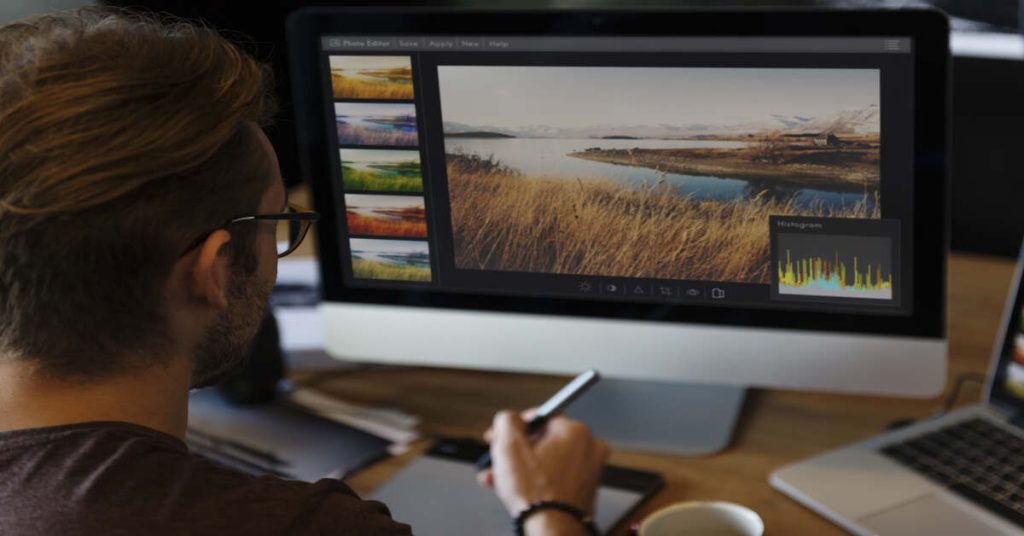Post-processing is a vital aspect of contemporary photography that can enable you to improve your pictures, fix flaws, and bring your creative ideas to reality. The point is that regardless of the shooting with a DSLR, a mirrorless camera, or a smartphone, good editing may turn a good picture into a beautiful piece of art. The following are some of the most important post-processing techniques that would take your photography to a new level.
1. Basic Adjustments
Exposure and Brightness
The first thing to do is to turn up or down the exposure of the image. Adjust these settings to rectify any dark or bright spots. The use of brightness and exposure can make an image look more attractive, as well as bring dramatic and depth in an image.
Contrast
Contrast is also used when you need to bring out the light and dark regions in your image. Higher contrast will result in your images popping, whereas a lower contrast will give it a softer more muted appearance adding to mood.
Saturation and Vibrance
Saturation and vibrance also intensify all colors in your picture, although the less saturated colors are selectively intensified by the vibrance. These tools will help you make your pictures more vibrant and they do not look unnatural. Do not over do it too, too much saturation will produce colors that are unrealistic.
2. Color Correction
White Balance
It is very important to fix the white balance in order to get the right colors in your photos. Temperature and tint adjustment eliminates color casts due to various lighting conditions. Strive to achieve natural skins and natural lifelike colors on landscapes.
Hue Adjustments
Adjust hues to make minute adjustments on certain colors in your image. This is especially helpful when it comes to the landscape where some of the colors will prevail. Changing colors may assist in balancing your photo and make it look more balanced in terms of colour palette.
3. Cropping and Composition
Cropping
One of the such tools that will enhance composition and remove distractions in your images is by cropping. Create a more balanced photograph and engaging photographs using rule of thirds or other compositional guidelines. Do not fear to cut out unnecessarily distracting parts of your subject.
Straightening
When the horizon line is tilted, then you can straighten your image with the straightening tool. The straight horizon when it comes to landscape and architectural photography is very essential and it will help in boosting the overall professionalism of your work.
4. Advanced Techniques
Sharpening
The process of sharpening makes your images look smoother as the details are sharpened and made more distinct. Rub sharpening when needed not to cause noises particularly on places with minute details. Paying attention to the quantity applied too much sharpening may result in artificial looking edges.
Noise Reduction
Elevated ISO levels will result in noise (graininess) in your pictures, especially when shooting in the dark. Process grainy areas with noise reduction tools without losing details. The most important thing is balance, as too much reduction of noise may lead to loss of sharpness.
Local Adjustments
Local adjustment tools (e.g., brush or gradients) can be used to improve certain parts of your picture. It is a technique to make a subject brighter or a background darker or to bring out more details without having to affect the whole picture. This can be accomplished by the use of local adjustments that can assist in directing the eye of the viewer to the focal areas of your composition.
5. Creative Effects
Filters and Presets
Filter and presets could be experimented with to get various styles and moods in your photography. The numerous editing software packages have numerous pre-set filters that can transform the appearance of your pictures within seconds. Instead, you can make your personal presets to be able to edit across the photos in a series.
Vignetting
There is a way of adding a vignette to attract the focus of the middle of your picture by either darkening or lightening the edges. This slight effect will give an added emphasis on your subject and bring a more personal atmosphere. This trick is to be used in moderation to ensure a non-dramatic appearance.
Conclusion
Post processing is an important part of photography which enables you to perfect and improve your pictures. With a perfect command of these post-processing processes, you can take your photography to a new level, convey your vision as a creative being and create beautiful images that people will feel with. It is important to remember that editing can help you to improve your work; though it must not overwhelm your original photo. Accept the editing process as a way of finding your own style and talent to tell the story.
Frequently Asked Questions (FAQs)
1. Which software would be ideal in post-processing my photos?
The most used post-processing software is Adobe Lightroom and Photoshop, Capture One, and Affinity Photo. They all have their advantages, and you have to pick one that fits your working process and editing style. Lightroom is also suggested to beginners due to the ease of use and capabilities.
2. How much editing is too much?
You can edit as much or as little as you want to, and depending on the effect you want. An appearance that is natural should be sought, and one should avoid over-editing, as it can make the picture unattainable. Editing is sometimes better done lightly and it is always better to concentrate on adding more to the photograph you have instead of radically changing the photograph itself.
